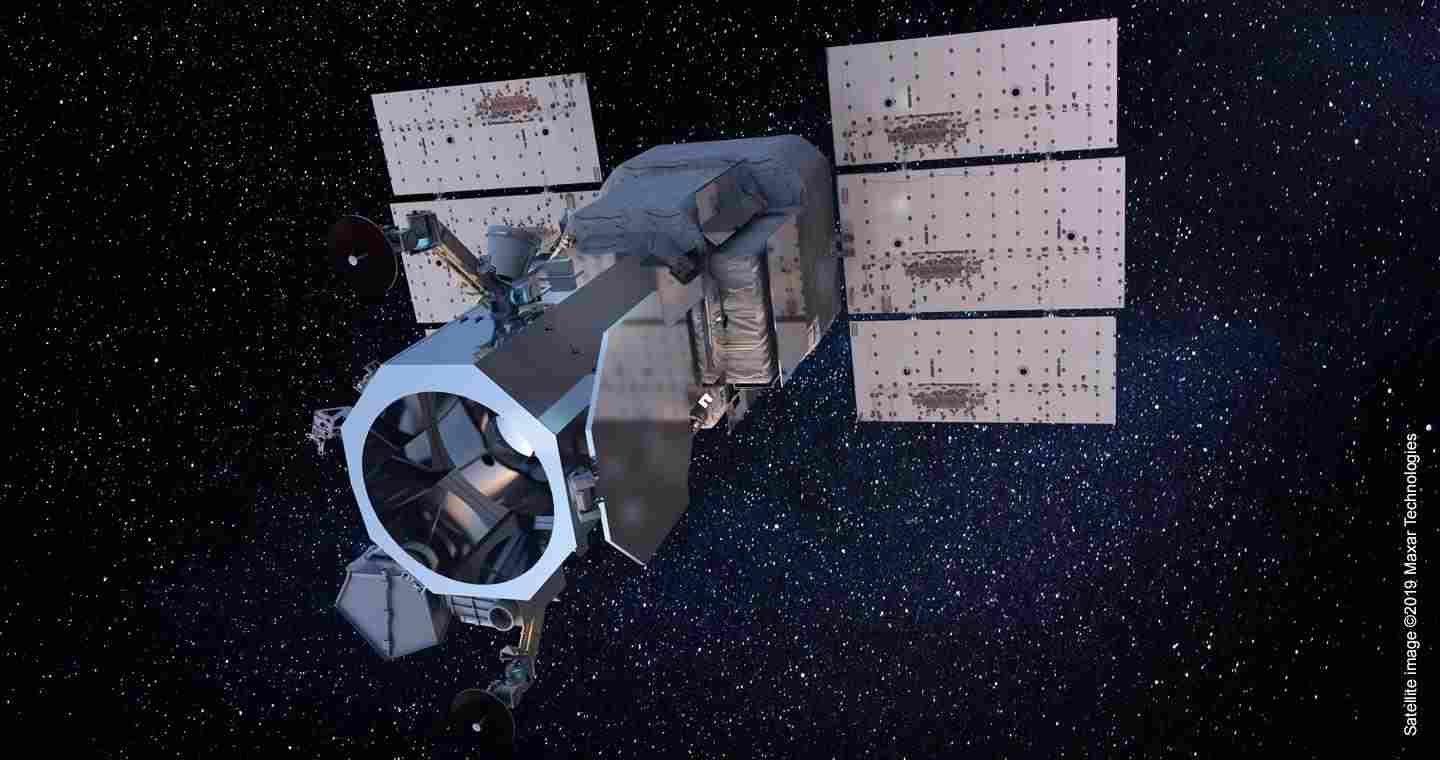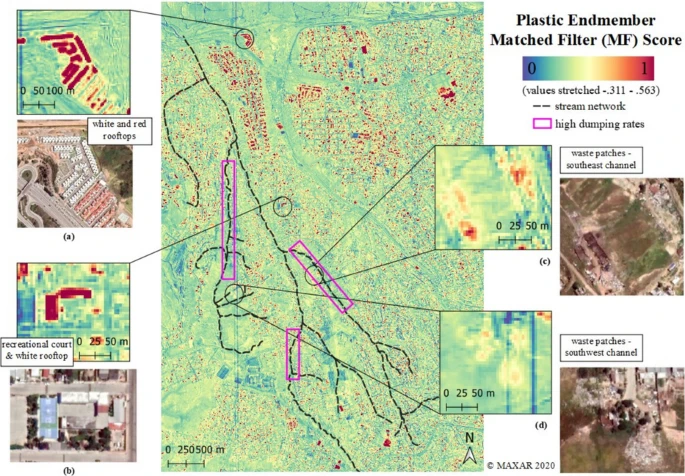Scientists have developed a new method to identify and map plastic waste in urban areas using satellite imagery, offering new hope for tracking pollution and improving waste management in cities worldwide. The team of researchers led by Elena Aguilar from the San Diego State University, discovered that common plastic materials have unique “fingerprints” when viewed through special infrared light sensors. Just as different materials reflect sunlight differently to our eyes, plastics reflect infrared light in distinctive patterns that satellites can detect. The WorldView-3 satellite, orbiting high above Earth, captures these invisible signatures with remarkable precision, down to areas as small as 4 meters across. This breakthrough could revolutionise how we monitor urban waste, particularly in areas where traditional ground based surveys are difficult or dangerous to conduct.
 The United Launch Alliance Atlas V rocket carrying the WorldView-3 satellite successfully launches from Space Launch Complex-3 at Vandenberg Air Force Base. (Credit : U.S. Air Force/Joe Davila)
The United Launch Alliance Atlas V rocket carrying the WorldView-3 satellite successfully launches from Space Launch Complex-3 at Vandenberg Air Force Base. (Credit : U.S. Air Force/Joe Davila)
The research team focused on a complex urban drainage area along the US-Mexico border, where they combined three approaches: walking surveys on the ground, laboratory analysis of plastic samples, and satellite image analysis. During field work, they discovered several large waste accumulations in stream channels, some covering areas equivalent to a basketball court.
Scientists analysed plastic samples in the laboratory that had been collected from the field using specialised equipment that measures how materials reflect light across different wavelengths. They tested common plastics found in urban waste, including water bottles (PET), shopping bags (polyethylene), and PVC pipes. Remarkably, each plastic type showed consistent patterns that remained detectable even when simulated through the satellite’s sensors.
The satellite, known as Worldview-3, is a commercial Earth observation satellite launched in August 2014. It operates from an altitude of 617 km and generates images with a resolution of 0.31-meter in visual wavelengths and crucially for plastic detection research, shortwave infrared imagery provides 3.7-meter resolution. With its resolution capabilities and field of view it can collect up to 680,000 square kilometres of imagery per day.
 Worldview-3 satellite (Credit: Maxar Technologies)
Worldview-3 satellite (Credit: Maxar Technologies)
Worldview-3 successfully identified not only waste piles but also plastic based items and structures like polymer coated roofs. The system achieved precision scores between 92-95%, meaning it correctly identified plastic materials in nearly all cases tested. The key discovery was that a generalised “plastic signature” derived from satellite images matched closely with laboratory measurements of five different plastic types.
This technology extends beyond simply finding trash though. The presence and distribution of synthetic materials can reveal important information about housing quality, development patterns, and waste management effectiveness in urban areas. Areas with high concentrations of unmanaged plastic waste often correlate with inadequate infrastructure and socioeconomic challenges.
While these results are promising, the researchers acknowledge that more work is needed to test the method in different urban environments and with higher resolution imagery. Cities with greater material diversity might present new challenges for the detection system.
This satellite based approach could become a powerful tool for urban planners, environmental agencies, and waste management authorities. By providing regular, comprehensive monitoring of plastic waste, it could help cities respond more quickly to pollution hotspots and evaluate the effectiveness of cleanup efforts.
As plastic pollution continues to grow globally, having eyes in the sky that can spot waste accumulations offers a new weapon in the fight against urban environmental degradation.
Source : Mapping terrestrial macroplastics and polymer-coated materials in an urban watershed using WorldView-3 and laboratory reflectance spectroscopy


